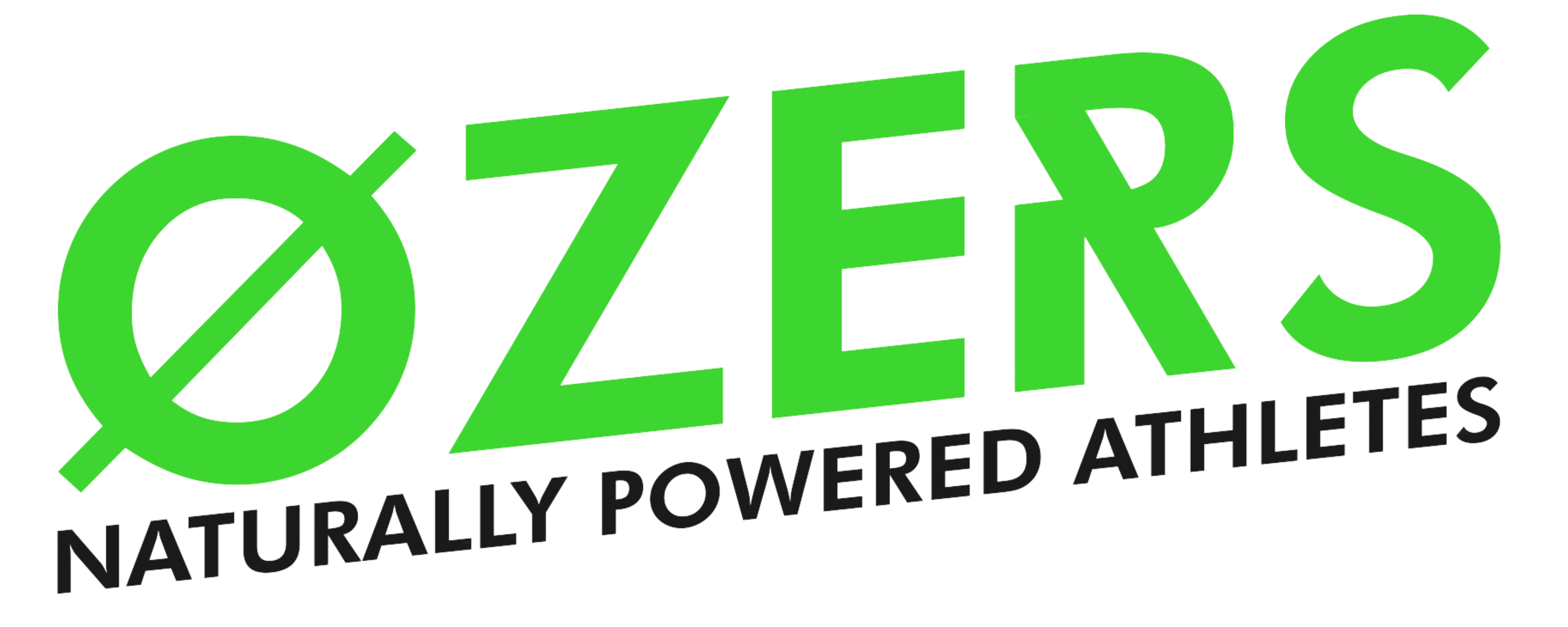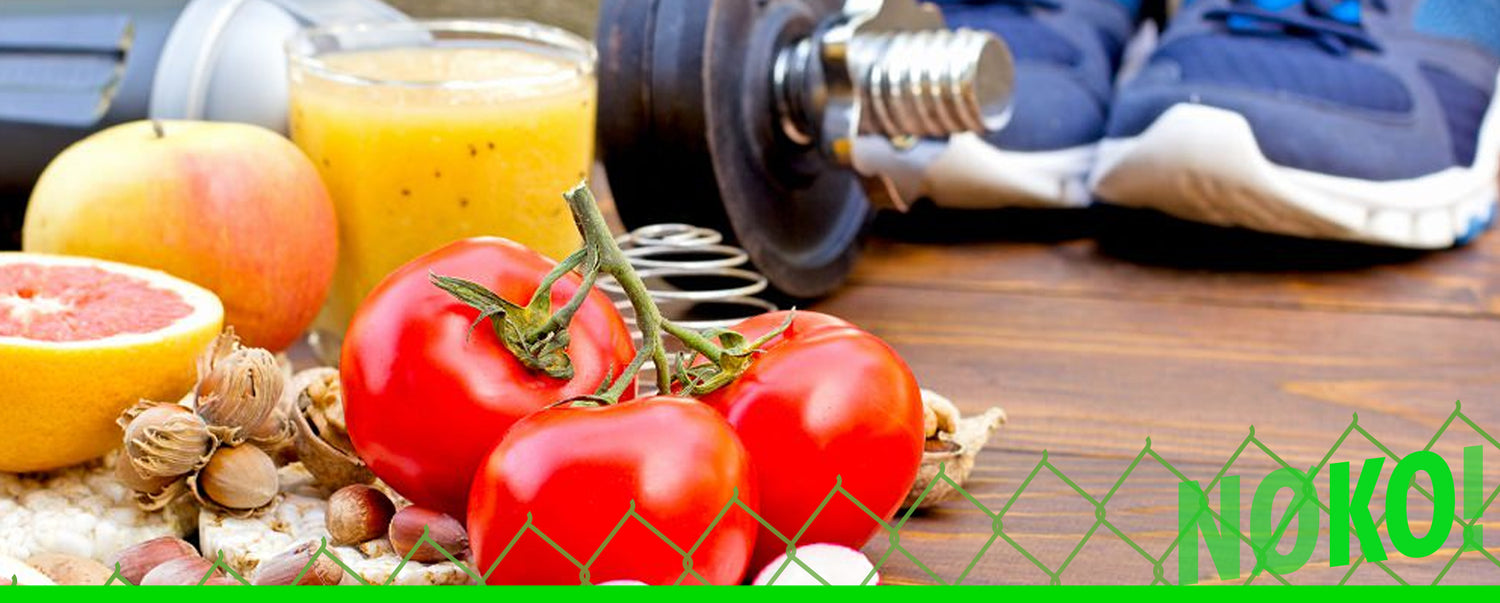Recovery and food, two closely related concepts
Why eat after exercise?
It may seem trivial but once a good job has been done, it is extremely important for our muscles and joints to recover as much as possible. Essential factors such as the intensity and duration of the effort must be taken into account. This is about rebuilding and strengthening our muscles after exercise in the hour or hour and a half after exercise! It is therefore crucial to recover well.
Therefore, it is essential for our body to eliminate waste accumulated during exercise. It is also important to mention hydration (sometimes neglected), which is a priority in the post-training recovery stage!
Toxins and acids formed during exercise disrupt cell function. Dehydration causes problems with food intake and muscle recovery. During these first hours, the muscles need glucose and protein for their recovery, because they have suffered a loss of glycogen and a breakage of their muscle fibers. This is why a regenerating drink such as post-training by NØKO will considerably help your tissues to regenerate more quickly and optimally..
The digestible aspect of your post-training meal is very important: it is best not to have too much digestion, so the intake should be very measured and low in fat. The main objective of the post-training meal is above all to restore energy stocks by a more or less significant intake of starches.
What to eat after exercise
The objective this time is therefore to make up for the expenses that your body has provided during the effort (especially if the training is intense) by choosing the ingredients carefully. It's not just about rushing into the first fast food or restaurant to fill your stomach emptied by the effort, but rather about looking for simple and balanced foods that will do the job perfectly.
We keep repeating it but the priority after a workout is hydration. During a more or less long training your body has lost / evacuated water through perspiration and breathing in particular. It is therefore important to drink before swallowing anything. 500 mL of mineral water to restore water losses will do the trick. Be careful though, it is essential to hydrate before, during and after exercise. Do not wait to be thirsty to drink because it is already one of the advanced signs of dehydration! Carbohydrates to recreate the energy stores of your muscles (muscle glycogen). It's usually pretty well done: bananas, dates, homemade smoothie, etc. will do. Obviously, natural proteins are to be preferred as their amino acids are rich and contribute a lot to our metabolism as a whole. Indeed, amino acids from proteins have been used during your sports session, thus causing micro-lesions of muscle tissue. It is therefore essential to repair them. Thevegetable proteins are also a very good way to compensate for this lack.
The role of joints in recovery
Recovery after sport
Recovery is a key step too often overlooked by many athletes. Indeed, once our training is done, we think that is enough. That there is no need to take care of his body after what has done to him. But recovery is part of training. On the contrary, this is a key stage of training, and yes, it is part of it. Post-workout nutrition plays an important role, but you also have to think about yourjoints to restructure them properly, as well as his muscles.
Stretching
Active recovery, which aims to help the body recover faster and more effectively, includes all the stretching that takes place right after training. It is important not to neglect this step, which is also key for optimal recovery. All muscles used during training should be stretched after training. Yes, even if a specific part of the body and work during the effort you should know that all the muscles are solicited.
In general, it is best to practice stretching about 30 minutes to 1 hour after training. Only if certain muscles are damaged it is preferable to wait several hours in order to limit aches and contractions as much as possible. On a microscopic scale, stretching helps eliminate what is called lactic acid by promoting blood flow.
It is important to practice stretching in a simple and effective way, without rushing the muscles in order to avoid injuries as much as possible. It is therefore preferable to do short and repeated stretches or favored long and single stretches. In practice, each muscle or group of muscles solicited by the effort must be stretched for 12 to 15 seconds (4 to 5 full breaths). In terms of frequencies, 4 to 6 times, alternating left side and right side will do the trick. Massages after exercise are also a good way to limit muscle aches and eliminate toxic substances produced during exercise.
Important note: You should know that stretching is not only to be done after a workout of greater or lesser intensity. The regular practice of the latter helps maintain muscle elasticity and strengthen the joints.
The sleep
Sleep is a matter of course for almost all of us. This is why it is considered the simplest effective method to allow our body to recover optimally. Sleep helps repair small injuries or trauma that our body may have suffered during training. In addition, this is where muscle growth takes place at the highest point during the so-called "muscle relaxation. The latter enter a phase of inactivity, an essential stage in the regeneration of muscle cells. Finally, it is important to mention that sleep improves the quality of the immune system, a significant notion in the current context!
Regular sports activity significantly improves the depth and quality of sleep. On the other hand, lack of sleep affects athletic performance. One does not go with the other, the relationship between sport and sleep constitutes a virtuous circle.
Every great athlete needs rest. Whether they are football fighters or even joggers, he will have to go through this recovery phase. Give your body time to eliminate all the toxins accumulated during exercise. Replenish energy reserves and regenerate muscle tissue.
Before sleeping, it is advisable to avoid electronic devices emitting blue light, which stimulates the brain and therefore delays fatigue and therefore recovery. Similarly with caffeine, it is advisable to avoid consuming it after 3 p.m. because its stimulating effect is no longer to be proven during the evening. It is therefore advisable to sleep between 7 and 9 hours a night in a cool room without light so as to have the most restorative sleep possible. Preparing for sleep is already starting to recover.
The best foods for recovery
What type of diet after physical exertion like sparring
Once your session is over, it is important to focus on certain foods. Especially those that bring a certain energy value to our body. Like, for example, carbohydrates or proteins. Foods with a high nutritional content and directly targeting the muscles must be favored in a recovery phase. (never forget to hydrate ;)) Here are some examples:
- Proteins: Most of the time in all diets yes, it is the proteins that are privileged. Indeed, they are considered a mandatory resource for my muscle to recover from the efforts made during training. If we had to cite an example, it would be vegetable proteins high in protein and very low in lipids, however, we must be careful with the excess of proteins which will be synthesized as carbohydrates. It is therefore useless to eat more than 1.6 g of protein per kg of body weight.
- Carbohydrates: perfect elements for regenerating the body with glycogen.
- Acidosis: to fight against acidosis, it is recommended to drink alkalizing drinks, a drink rich in baking soda for example.
A product that will allow you to find all the elements spent during your training is thePOST-TRAINING by NØKO, you will findvegetable proteins , microalgae (spirulina and chlorella), glycine and BCAA. It's perfect after training, providing you with calcium, vitamin C and magnesium, which contribute to normal energy metabolism.
The best foods for better recovery
Too often we tend to want to eat heavily right after training. Immediately after the effort, it is precisely advisable to consume, for example, cereal bars or dried fruits. Regarding the post-training meal par excellence, it is advisable to consume foods of the type:
- Vegetable protein powder: The nutritional values of these are very interesting. Indeed, they are very effective in their role of replenishing the muscles after exercise. The proteins that are provided through this powder have a significant restorative effect on the body in the short and long term.
- Cucumber: Its skin, containing silica (component allowing the regeneration of muscle tissue) and an essential element for Fighters of all kinds after sparring.
- Dried fruits with almonds: almonds contain many nutrients such as: fiber, magnesium, manganese or vitamins. These are high-protein foods that fit perfectly into your salads or snacks.
- Sweet potato: What's better than sweet potato! This is a very rich and complete food in energy value but above all very interesting for its iron and vitamin C content. Very low in calories, sweet potatoes contain carbohydrates which help build the glycogen of your muscles.
- Spirulina: rich in antioxidants, it helps to fight against perfect inflammation to reduce the damage suffered by your muscles.

Passive recovery in combat sports
The objectives of passive recovery
Intensive workouts leave many scars on our bodies on a microscopic scale. Indeed, training shakes up our metabolism and especially our muscles. Training therefore amounts to transforming our accumulated energy reserves through a healthy and varied diet combining movement and muscular effort. There are two types of recovery, active recovery which we will see later and passive recovery which corresponds to everything outside of physical activity allowing our body to recover optimally after training. This passive recovery includes relaxing activities such as massages, sauna sessions, foam rolling or simply sleeping. This is about freeing your body just after an effort so as to feel in better shape over the long term. Here are the benefits of passive recovery:
- Injuries: in combat sports blows are frequent and this can damage tissue damage can quickly be problematic for the athlete. Rest promotes the work of the body in rebuilding and repairing the damage suffered.
- Psychology: effort is a mental stress that causes invisible sequelae. The brain is a complex organ whose sole purpose is to reduce stress and restore training trauma. Not being an instantaneous process, rest greatly helps in this mental recovery.
- The body: it is constantly adapting to the external environment and the efforts made, so it adapts relatively quickly to return to normal, but a series of training sessions does not allow it to recover sufficiently and this can lead to overtraining with a risk of injury, it is therefore necessary to rest and space out the sessions.
Properly orient passive recovery after a combat sports training session
A passive recovery must be spread over 24 and 48 hours because it is time that plays in favor of recovery but not only, various factors intervene during this period: rest, a healthy and varied diet, and one or more sessions targeted stretching.

Active recovery in combat sports
The benefits of active recovery
Combat sports training and sparring are very demanding in terms of effort and recovery. Practicing a combat sport means that you have to solicit almost all of your muscular envelope during the effort, which means that recovery should be global and not targeted. We have previously talked about passive recovery, it is time to talk about active recovery in the field of combat sports. This type of recovery has many advantages. The fact of devoting time to a low intensity activity after a big effort makes it possible to maintain a high blood flow and therefore to supply your muscles with oxygenated blood and finally to eliminate a maximum of toxins present in the muscles in order to avoid any aches or contractures.
As said before, recovery, whether active or passive, is a key step in the sports training phase, more particularly this active recovery allows the athlete to stay in motion and avoid the low morale that some may feel. on a daily basis during more or less intense training.
What type of active recovery after a combat sports session?
The complexity of combat sports training such as English boxing where the whole body is used makes it difficult to target a particular area, so recovery must be optimized according to the areas worked. The principle is to engage your body in a continuous effort but with a low intensity, you have to be careful that these recovery phases are not intended to prolong the effort. In general, we practice a low-intensity recovery activity (at 50% of the VMA for running) to stabilize our heart rate, we greatly reduce the intensity of the training to reaccustom our body.
- Walking: what is the simplest is often the most effective, after a boxing session, returning from the gym to your home provides a complete activity perfect for relaxing your body without rushing it and losing a few calories.
- Yoga: it is very gently that we come to recover, we work on our balance and our mobility while making our joints and muscles work.
- Cycling: at low intensity it is a very good activity to recover, practicing outdoors is to oxygenate the body and the mind perfect for feeding the muscles, a short 1 hour ride is perfect for recovering from a coaching.
- Swimming: it is the most complete activity that works the whole body without the risk of injury, the simple fact of doing lengths without a specific goal is perfect for recovery. Swimming can be practiced during the days off and not right after your boxing session as this could lead to aovertraining.

The best exercises for better recovery
What are the best exercises for optimal active recovery?
The practice of combat sports leads to the production of intense efforts for the human body and are often carried out in anaerobic conditions, this is the case for judo, English boxing, MMA or even taekwondo. Studies have shown that after an intense sports session, practicing a low intensity activity allows a faster return of muscle capacity, this is theactive recovery. Recovery is one of the key moments in training and the period following physical exertion. After a big session where the muscles have been used, the muscles used tend to acidify strongly, recoveryactive oxygenates the muscles and therefore partially eliminates toxins. This is a recovery that allows our body not to remain inactive and limits aches and other muscle pains.

What you must remember
Training is simple and complex at the same time; composed of a phase of preparation, effort and recovery, it aims to make the athlete in good shape and ready for combat. The recovery phases are key stages in the preparation of the athlete, whether active or passive, healthy, varied diet and hydration remain pillars of this stage.




